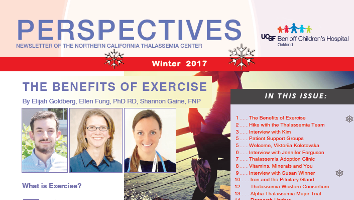IRON OVERLOAD AND CHELATION THERAPY
Treatment with deferasirox (Exjade)
The oral iron chelator deferasirox (Exjade) is taken as a dispersible tablet once a day. It was approved in North America in November 2005 for the treatment of transfusional iron overload. The clinical experience is not as great as with deferoxamine. However, the drug has been used in thousands of patients and has been shown to be an effective iron chelator and to have an acceptable safety profile. It has become the most common iron chelator used in North America and many parts of the world because of its once-per-day oral dosage.
Deferasirox has good oral bioavailability and a long half-life suitable for once-daily dosing. In general, deferasirox appears similar to deferoxamine in lowering liver iron and serum ferritin levels in a dose-dependent manner. The starting dose is 20 mg/kg per day. The dose is often increased to 30 mg/kg per day, and in certain cases, to 40 mg/kg per day. After starting therapy, increase the dose by 5 to 10 mg/kg every three to six months based on iron stores. A dose of 20 mg/kg per day is effective in establishing negative iron balance in some patients. However, a higher dose of 30 to 35 mg/kg per day is usually required to establish negative iron balance. Recent data indicates that deferasirox in doses of at least 30 mg/kg per day significantly improves cardiac iron. Toxicities like skin rash, nausea, and diarrhea are dose-related, so starting at 20 mg/kg per day and working upward can help develop tolerance to the medication, even though the patient will likely require a higher dose at some later point. Ferritin is usually the most frequent parameter used to monitor efficacy. It is important to check ferritin with each transfusion and use the average change from three to five measurements to judge efficacy. (Also see Section 6, on monitoring iron overload.)
The safety profile of deferasirox is similar in pediatric and adult patients. In studies of deferasirox in children less than two years old, the medication appears to be safe, but the studies are limited. The most common side effects include gastrointestinal symptoms such as nausea and vomiting, diarrhea, and abdominal pain; mild skin rash is the second-most common side effect. These side effects often resolve with time and are dose-related. If gastrointestinal symptoms are significant, the dose can be lowered or stopped and then gradually increased. Dividing the same dose into twice-daily administration may decrease these side effects.
The most serious side effect with deferasirox is potential kidney damage; a mild nonprogressive rise in serum creatinine is seen in about one-third of patients. The dose should be lowered if there is an increase in serum creatinine that exceeds 33 percent of the baseline or greater than the upper limit of normal on two consecutive tests. Creatinine levels should be monitored monthly and repeated more frequently if rises are noted. Renal tubular problems, including severe renal tubular acidosis, have been seen.
Deferasirox is a dispersible tablet that can be suspended in water, apple juice, or orange juice. It should be taken on an empty stomach 30 minutes before or after eating. Recent data suggests that taking deferasirox with food is acceptable in patients who have difficulty with deferasirox on an empty stomach.
As with deferoxamine, deferasirox doesn’t work if the patient does not take it. While there is improved quality of life with the oral chelator, compliance remains a problem. If a patient seems to not be responding, compliance should be the first issue addressed. Even though it is a once-daily dose, the preparation of the liquid takes time and planning. The drug is suspended in the liquid and has a chalky texture. Some patients let it settle before drinking, discarding the scum (the actual drug) at the bottom. Others describe forgetting to put the tablet in liquid in the morning before their shower so when they are ready for school or work, the drug is not ready, and they skip it. It may take some creativity on the part of the team to help the patient get past some of these barriers. As with deferoxamine, some patients have a serious psychological aversion to taking the medicine and may need professional counseling. Addressing compliance issues is probably one of the most important advantages of having a comprehensive team to help the patient with a chronic disease.














